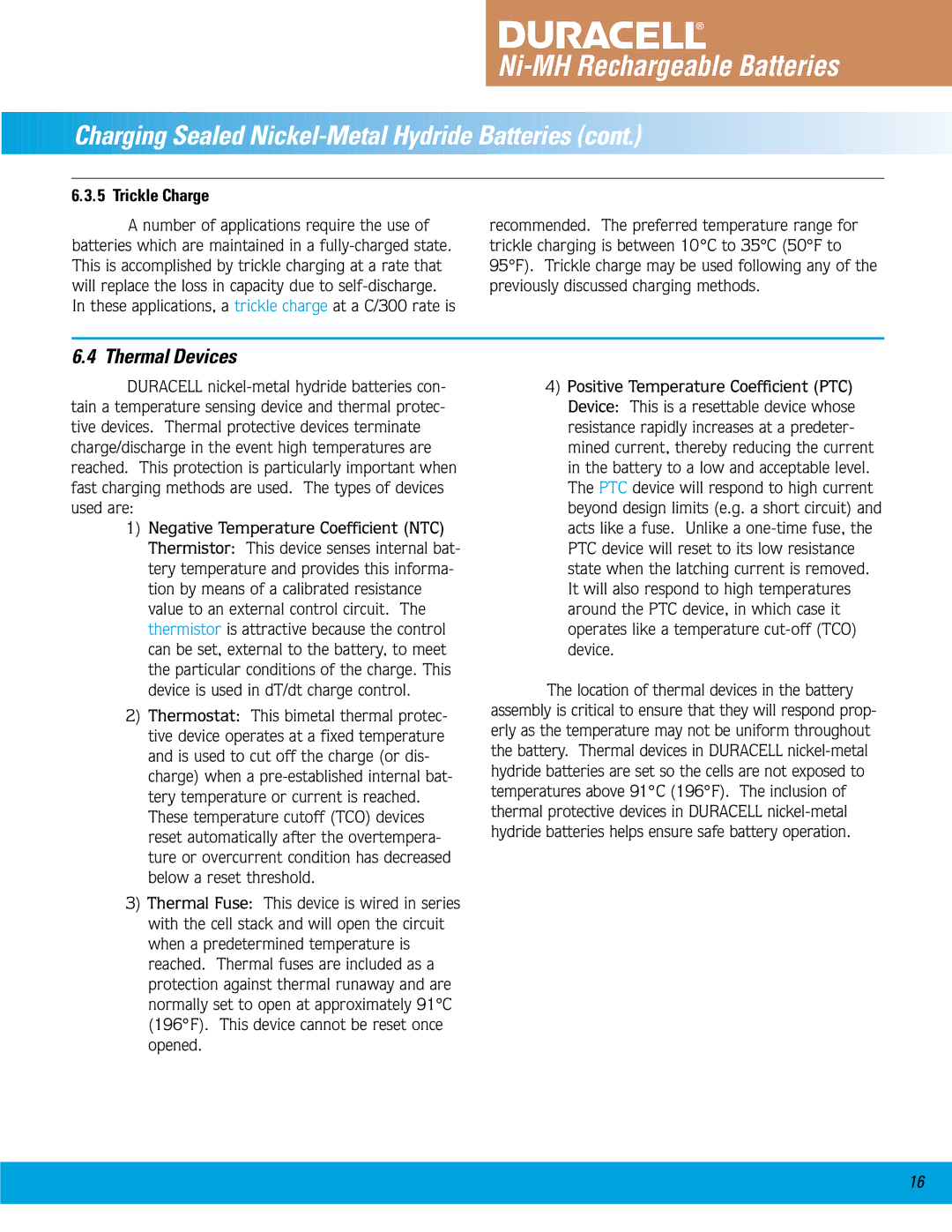
Ni-MH Rechargeable Batteries







 Charging
Charging Sealed
Sealed
 Nickel
Nickel -Metal
-Metal (cont.)
(cont.)































6.3.5 Trickle Charge
A number of applications require the use of batteries which are maintained in a
recommended. The preferred temperature range for trickle charging is between 10°C to 35°C (50°F to
95°F). Trickle charge may be used following any of the previously discussed charging methods.
6.4 Thermal Devices
DURACELL
1)Negative Temperature Coefficient (NTC) Thermistor: This device senses internal bat- tery temperature and provides this informa- tion by means of a calibrated resistance value to an external control circuit. The thermistor is attractive because the control can be set, external to the battery, to meet the particular conditions of the charge. This device is used in dT/dt charge control.
2)Thermostat: This bimetal thermal protec- tive device operates at a fixed temperature and is used to cut off the charge (or dis- charge) when a
3)Thermal Fuse: This device is wired in series with the cell stack and will open the circuit when a predetermined temperature is reached. Thermal fuses are included as a
protection against thermal runaway and are normally set to open at approximately 91°C (196°F). This device cannot be reset once opened.
4)Positive Temperature Coefficient (PTC) Device: This is a resettable device whose resistance rapidly increases at a predeter- mined current, thereby reducing the current in the battery to a low and acceptable level. The PTC device will respond to high current beyond design limits (e.g. a short circuit) and acts like a fuse. Unlike a
The location of thermal devices in the battery assembly is critical to ensure that they will respond prop- erly as the temperature may not be uniform throughout the battery. Thermal devices in DURACELL
16
